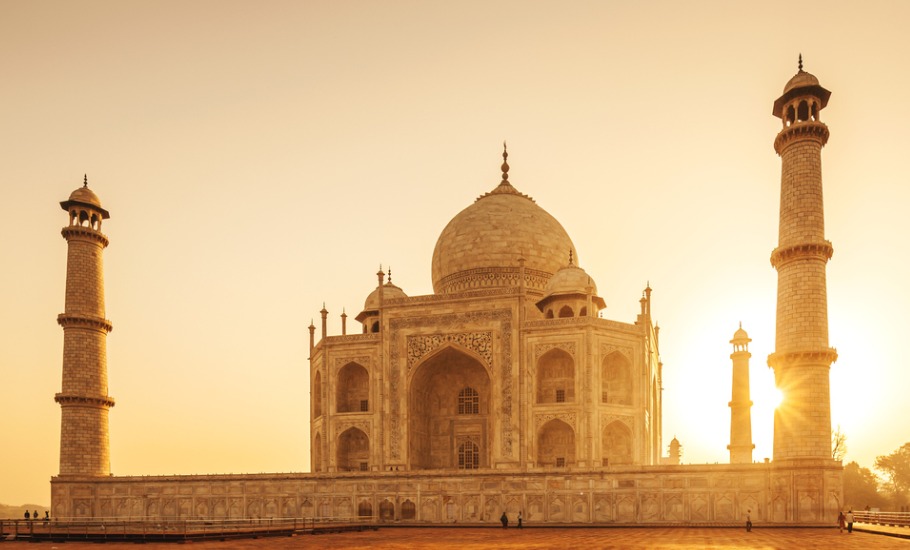
Rooms in Taj Mahal not permanently closed nor do they have idols: ASI

During the hearing on a plea in Allahabad High Court seeking a “fact-finding inquiry” into the history of the Taj Mahal, top Archaeological Survey of India (ASI) officials said the claim that “22 rooms in the monument were permanently closed,” was not correct.
The plea was dismissed by the court.
The ASI officials said that the claim of the petitioner that “22 permanently locked rooms… could be housing Hindu idols from ancient times” was wrong on both counts, a report said.
One, these rooms officially called “cells”, are “not permanently closed” and were only recently opened for conservation work, ASI officials told The Times of India, adding that all records scrutinised till now over the years “have not pointed to the presence of any idols”.
The report quoted a senior official privy to the restoration work done just three months ago as saying that, “various records and reports that have been reviewed till now haven’t shown the existence of any idols”.
Over 100 cells in Taj closed to public
According to those with the most insider access to the Taj, there are over 100 cells in various portions of the mausoleum complex that have remained inaccessible to the public for security and safety reasons, and none of them has yielded any such findings as alleged in the plea.
“The petitioner’s claim of 22 rooms being permanently locked is factually incorrect as conservation work — including filling of cracks, re-plastering and anti-ageing treatments — are periodically done. In fact, the most recent work cost us Rs 6 lakh,” a senior ASI official told The Times of India.
Also read: Allahabad HC dismisses plea to open 22 rooms of Taj Mahal
Another senior ASI official stated that 100 public cells are located in the basement, higher levels of the main mausoleum, corner ‘burjs,’ the four minarets, inside the baolis near the mosque, and on the Chameli floor on the east, west, and north sides of the monument. Apart from these, several areas of the region’s other world heritage monuments, such as Agra Fort and Fatehpur Sikri, have been closed to the public for years due to security concerns.
Petitioner pulled up
On Wednesday, the Lucknow bench of justices D K Upadhyay and Subhash Vidyarthi had pulled up the lawyer of petitioner Rajneesh Singh, who is the media in-charge of the BJP’s Ayodhya unit, for filing the PIL in a “casual” manner and said it cannot pass an order under Article 226 of the Constitution in the matter. The bench said that it was a non-justiciable issue that cannot be decided or gone into by the court.
Dismissing the plea as misconceived, the bench pulled up the petitioner’s counsel Rudra Pratap Singh over and again for moving the PIL without properly conducting legal research work.
Right-wing conspiracy theory
Interestingly, Singh’s petition was based on a conspiracy theory supported by right-wing thinkers and historians, that the 17th century Mughal marvel was an old Shiva temple called ‘Tejo Mahal’.
The conspiracy theorists quote historical revisionist PN Oak, who in his book The Taj Mahal is Tejo Mahalaya: A Shiva Temple, claims that the world-reputed monument, commissioned by Shah Jahan in the memory of his favourite wife Mumtaz Mahal, was built on the foundations of a Shiva temple after being commandeered from the then ruler of Jaipur.
From raising questions on the nomenclature of the monument, to its architecture – which he claims bears imprints of a Hindu temple structure – to the famed love story of Shah Jahan and Mumtaz Mahal, Oak gives an extensive list of purported ‘anomalies’ which attempts to negate legends associated with the world heritage site.
He claims the term Taj Mahal does not occur in any Mughal court paper or chronicle, even in Shah Jahan’s son and successor Aurangzeb’s time, and is a corrupted form of the Sanskrit term ‘Tejo Mahalaya,’ an abode of Agreshwar Mahadev, the ‘Lord of Agra’. He further claims that the Hindu treatise on architecture, Viswa-karma Vastushastra, mentions the ‘Tej Linga’ among the many Shiva Lingas in the country. He alleges it is the same idol that was consecrated in the Taj Mahal and hence would have lent it the name Tejo Mahalaya.
Also read: Tejo Mahalaya vs Taj Mahal: What’s feeding a conspiracy theory

